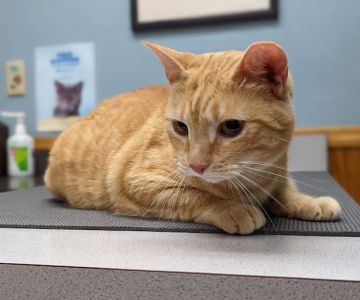What Does a Veterinarian Wear? A Guide to Proper Work Attire
As someone who has worked in the veterinary field for several years, one of the most common questions I get is: "What does a veterinarian wear?" While it may seem like a simple question, the answer is multi-faceted and depends on several factors, including the specific job, the environment, and the individual veterinarian's preferences. In this article, I will break down the different aspects of a veterinarian's work attire, from comfort and functionality to professional standards, helping you understand what goes into choosing the right clothing for the job.
1. The Importance of Comfortable and Practical Attire for Veterinarians
Being a veterinarian isn’t just about having medical knowledge and skills—it’s also about being on your feet for long hours, bending over animals, and sometimes working in challenging environments. Because of this, comfort and functionality are key when choosing work attire. Veterinarians need clothing that allows for movement, protects against potential hazards, and meets certain hygiene standards.
Veterinary professionals typically work in clinics, hospitals, or even in field environments, such as farms or shelters. Depending on the setting, the type of clothing and accessories they wear may vary. However, the overall goal is always to ensure that the veterinarian is prepared for anything while maintaining a clean and professional appearance.
2. Key Pieces of Attire Every Veterinarian Should Wear
There are several essential items that veterinarians wear regularly to ensure safety, comfort, and professionalism. Let’s dive into the main components of a veterinarian's uniform:
1. Scrubs: The Standard Choice for Veterinarians
Scrubs are the go-to attire for most veterinarians. These lightweight, comfortable garments are designed for ease of movement and durability, making them ideal for the fast-paced and physically demanding nature of veterinary work. Scrubs are available in a variety of fabrics, colors, and designs, but the most important factor is their functionality. Many veterinarians choose scrubs made of antimicrobial or stain-resistant materials to maintain hygiene and durability throughout the day.
Scrubs are also easy to clean, which is essential when dealing with animals that may have accidents or injuries. Most veterinary clinics provide scrubs with their branding, allowing staff to maintain a professional appearance while still being comfortable. Additionally, scrubs are often paired with a lab coat or surgical gown for added protection during certain procedures.
2. Lab Coats: For Professionalism and Protection
While not always necessary in every part of a veterinarian's daily work, lab coats are commonly worn during surgeries, consultations, or when handling more sensitive tasks. Lab coats provide an extra layer of protection against dirt, bodily fluids, and other contaminants that veterinarians may come into contact with while working with animals. They also contribute to a professional appearance, especially when meeting with pet owners or during formal procedures.
Most lab coats are made from durable, easy-to-clean fabrics, and they often feature several pockets for carrying essential tools such as pens, notepads, and diagnostic equipment. Some veterinarians opt for disposable lab coats for particularly messy tasks, ensuring that their clothing underneath remains clean.
3. Footwear: Comfort and Safety First
When it comes to footwear, comfort and safety are top priorities. Veterinarians spend a lot of time on their feet, so supportive shoes are a must. Many choose non-slip, closed-toed shoes or boots made from water-resistant materials to protect against spills, dirt, and moisture. Shoes with good arch support help prevent foot fatigue, which is common when standing for extended periods.
For veterinarians working in more hazardous environments, such as farm animals or emergency surgeries, steel-toed boots or shoes with added protection may be necessary. These shoes not only provide comfort but also protect against sharp objects, animal bites, or other potential injuries that could occur during animal handling.
4. Accessories: Utility and Safety
In addition to clothing, veterinarians often wear accessories that help them perform their duties more efficiently. For instance, a stethoscope is a crucial tool for any veterinarian, and many wear it around their neck for easy access during exams. Some veterinarians also wear gloves, especially during surgeries, examinations, or when handling potentially infectious materials. Gloves are vital for maintaining hygiene and preventing cross-contamination.
Other accessories may include masks, safety goggles, or face shields, particularly when working with infectious diseases or performing certain medical procedures. These items ensure that veterinarians protect themselves while working in a clinical or surgical setting.
3. What About Personal Style and Preferences?
While functionality is the primary concern when selecting work attire, veterinarians, like anyone else, want to feel good about what they wear. Many clinics allow their staff to add personal touches to their uniforms, such as choosing different scrub colors, fun patterns, or unique accessories. This helps create a more relaxed and positive work environment, which can reduce stress and improve job satisfaction.
For example, some veterinarians might choose scrubs with animal-themed prints, while others may opt for more muted colors to maintain a professional appearance. While there are guidelines for professionalism, many veterinary practices encourage individuality, allowing their employees to express themselves within the boundaries of their job requirements.
4. Real-Life Example: How Proper Attire Improves Comfort and Efficiency
I once worked in a clinic where the veterinarian I assisted wore a custom pair of scrubs that fit perfectly, had the right pockets for all the tools, and were made from breathable fabric that helped during long shifts. She mentioned how important it was for her to be comfortable in her attire, as it allowed her to move quickly between different tasks without feeling restricted. Her choice of proper footwear also made a huge difference. She was able to stand for hours without feeling fatigued, which made the job more manageable.
Another example comes from a veterinary hospital I visited for a tour. The surgeons in the operating room wore disposable gowns and face shields, which not only protected them from potential infections but also ensured the safety of the animals during surgery. The attention to detail in their work attire showed a high level of professionalism and care for both the animals and the staff.
5. How to Choose the Right Attire for Your Veterinary Career
If you're considering a career as a veterinarian or veterinary technician, it's important to understand what attire is required for the job. When choosing your work clothing, consider factors like the type of practice you’ll be working in, the tasks you'll be performing, and your personal comfort. Here are some tips to guide you:
- Comfort is Key: Choose fabrics that are breathable and allow you to move easily. Your job will require you to bend, lift, and move quickly, so comfort is crucial.
- Protection: Don’t forget about protective clothing like gloves and lab coats, especially when working with hazardous materials or during surgeries.
- Choose Shoes Wisely: Invest in supportive, slip-resistant shoes that will help you stay comfortable throughout long shifts.
- Professional Appearance: Even though comfort is important, maintaining a professional appearance is equally important. Select uniforms that fit well and give off a polished look.
In conclusion, what a veterinarian wears is more than just a fashion choice—it’s about functionality, safety, and comfort. Whether you’re a veterinarian yourself or just curious about the profession, understanding the key elements of work attire can give you valuable insight into the daily life of a veterinary professional. If you’re looking to purchase high-quality scrubs, footwear, or other accessories for your veterinary career, be sure to check out products that combine comfort, style, and durability. Explore more at [Computer Repair] for the best options!











